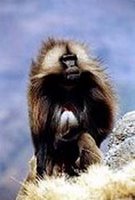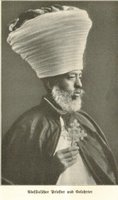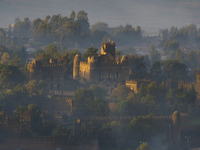In the month of September in Highland Ethiopia, after the Monsoon rains, rural areas of the country blooms with the yellow daisy known as Yadey Abeba and Meskel Abeba in Amharic. Simultaneosly in The Eastern part of the United States, when summer month comes to an end, the countryside also turns yellow with a similar wild flower identified as Tickseed Sunflower (scientific name Bidens aristosa or Bidens polylepis of the Asteraceae, Aster family). The flowers, seeds and plant leaf and growth pattern of both Ethiopian and American plants are identical. The question here is: Was it possible that the flower was initially introduced from Ethiopia by a botanist at the turn of the century? Below are some photographs of the flowers taken in Catharpin, Virginia about 30 miles south of Washington DC. The flower also has the distinctive smell of Yadey Abeba, the long resistent seeds and the carpet growth characteristics in the open fields. In Ethiopia the flowers are used in the festival known as Enkutatash and Meskel but the same flower is considered as weed in the Eastern United States, especially Virginia and North Carolina. (Photos by B.W.Gabriel September 2007 Virgina USA)

Clusters of the American Yadey Abeba known locally as Tickseed Sunflower on Sudley Road (Route 234) near Catharpin, Virginia.

A closeup of the Meskel flower in full bloom and a bud that is ready to bloom.

The characteristic yellow color of the American Meskel flower is identical to the Yadey Abeba of Ethiopia.

Fields are a welcome site for the daisies to flourish year after year. The seeds are very resilient resulting in condensed growth of the flowers.

Tickseed Sunflower of America and the Yadey Abeba of Ethiopia are identical yellow daisies that stop growing due to dry season.

The height and stem of the flowers from both countries are identical. Good fertile soil produces bigger flowers and taller plants.

numerous types of butterflies bees and insects feed on the nectar of this bright flower.
 Clusters of the American Yadey Abeba known locally as Tickseed Sunflower on Sudley Road (Route 234) near Catharpin, Virginia.
Clusters of the American Yadey Abeba known locally as Tickseed Sunflower on Sudley Road (Route 234) near Catharpin, Virginia. A closeup of the Meskel flower in full bloom and a bud that is ready to bloom.
A closeup of the Meskel flower in full bloom and a bud that is ready to bloom. The characteristic yellow color of the American Meskel flower is identical to the Yadey Abeba of Ethiopia.
The characteristic yellow color of the American Meskel flower is identical to the Yadey Abeba of Ethiopia. Fields are a welcome site for the daisies to flourish year after year. The seeds are very resilient resulting in condensed growth of the flowers.
Fields are a welcome site for the daisies to flourish year after year. The seeds are very resilient resulting in condensed growth of the flowers. Tickseed Sunflower of America and the Yadey Abeba of Ethiopia are identical yellow daisies that stop growing due to dry season.
Tickseed Sunflower of America and the Yadey Abeba of Ethiopia are identical yellow daisies that stop growing due to dry season. The height and stem of the flowers from both countries are identical. Good fertile soil produces bigger flowers and taller plants.
The height and stem of the flowers from both countries are identical. Good fertile soil produces bigger flowers and taller plants.  numerous types of butterflies bees and insects feed on the nectar of this bright flower.
numerous types of butterflies bees and insects feed on the nectar of this bright flower.






